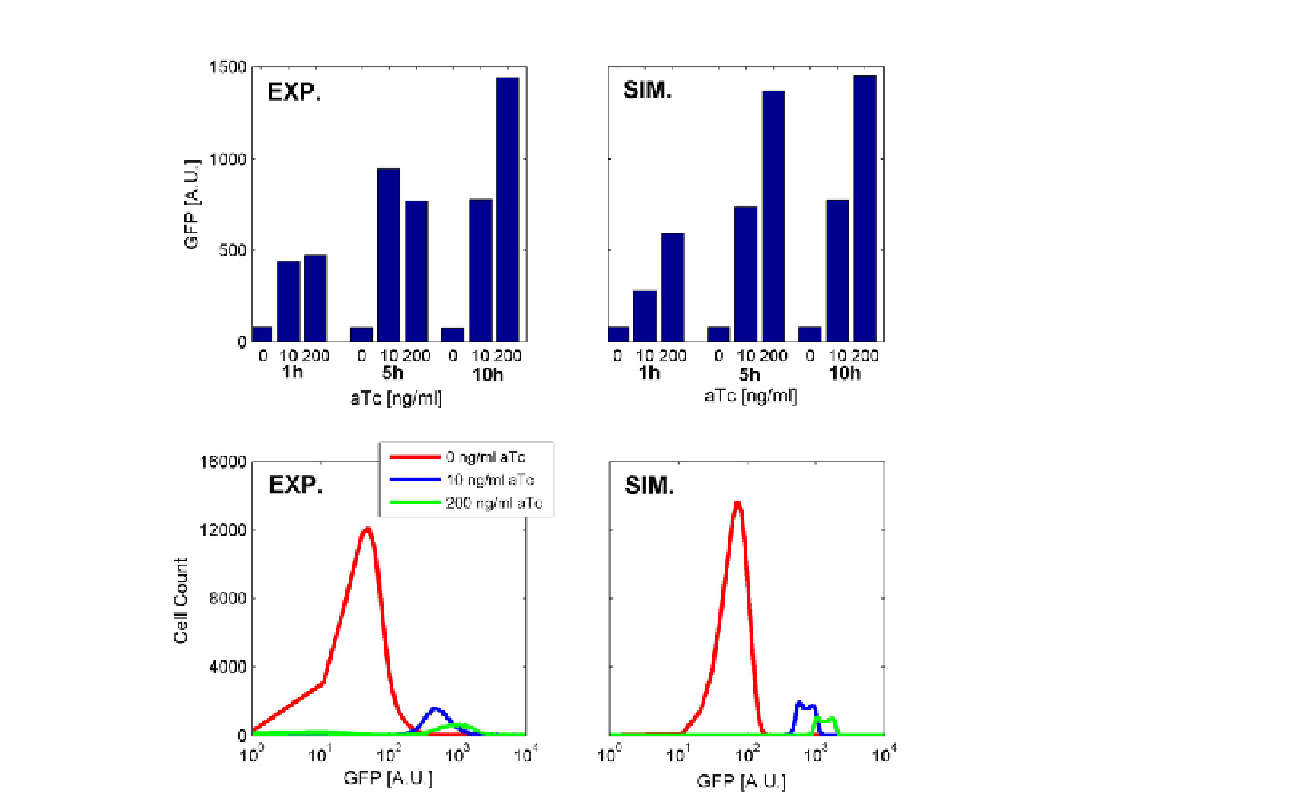Biology Reference
In-Depth Information
135
FIGURE 7.8
Behavior of the proTeOn system. Upper panel: Experimental (left) and simulation (right) results of the average cell behavior 1,
5, and 10 hours post-induction with 0, 10, and 200 ng/ml aTc. Lower panel: Experimental (left) and simulation (right) results
of the average cell behavior 10 hour post-induction with 0, 10, and 200 ng/ml aTc.
affinity of RNApol for the synthetic promoter can be determined both when the latter is free
and when it is bound to PROTEON or PROTEOFF. The corresponding dissociation
constants are detailed in
Table 7.1
.
The simulations demonstrate that the binding strength of RNApol for the synthetic
promoter increases 22 times upon binding of PROTEON to
tetO
. In addition, they show
that binding of PROTEOFF to
tetO
increases the binding strength of RNApol to DNA by
14 times. On the other hand, upon aTc treatment, the binding strength of PROTEOFF
protein to the synthetic promoter is reduced by 14 times. The kinetic parameters applied to
obtain these results can now also be added to the database of kinetic information
characterizing important biomolecular interactions.
CONCLUSION
We have shown how SynBioSS nicely complements experimental work to accurately
describe the behavior of synthetic biological systems and quantify the underlying
interactions. Therefore, it can be used to further predict, guide, and test the behaviors of
such systems quickly and economically. Integrating this kind of computational tool with


